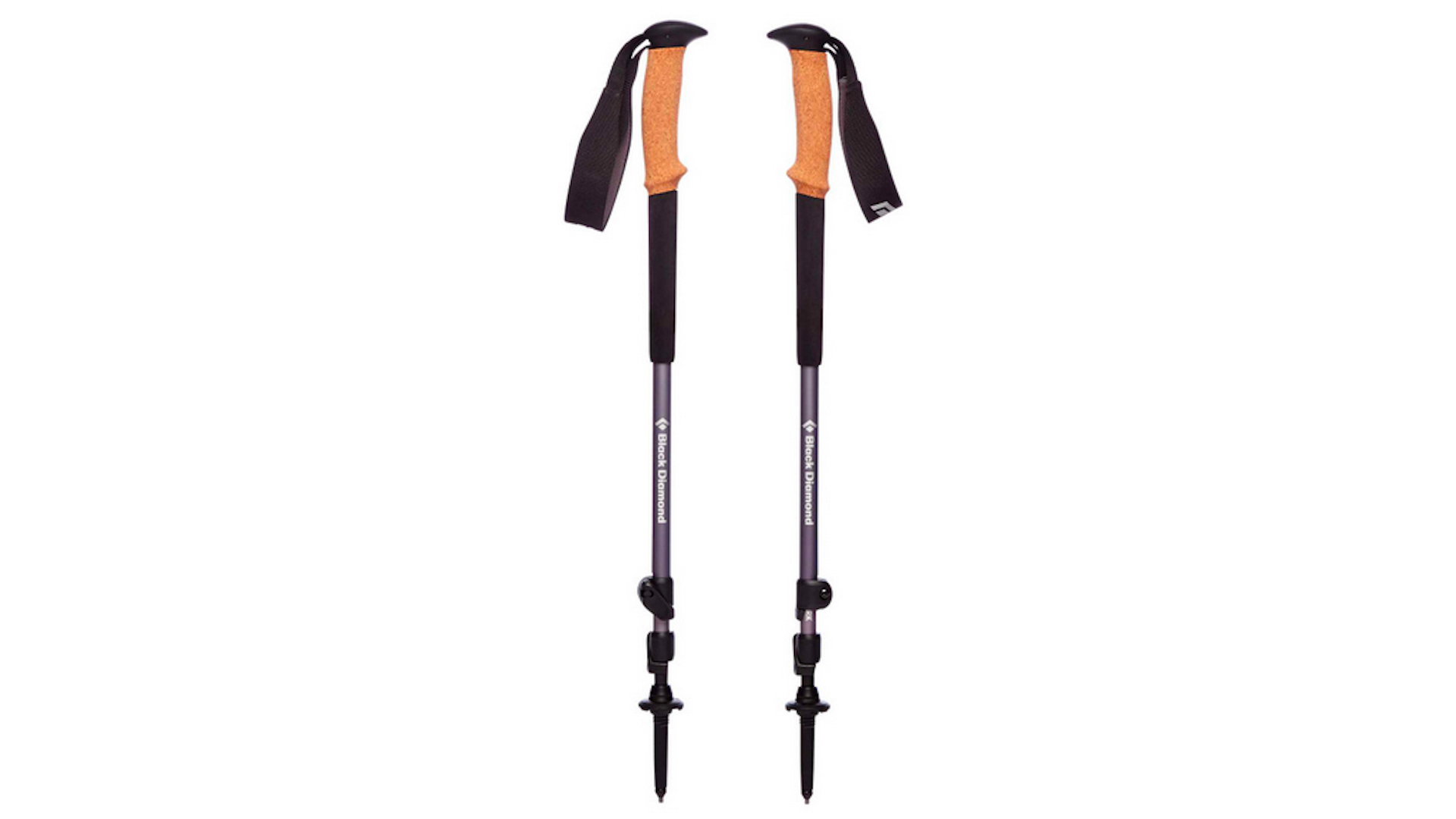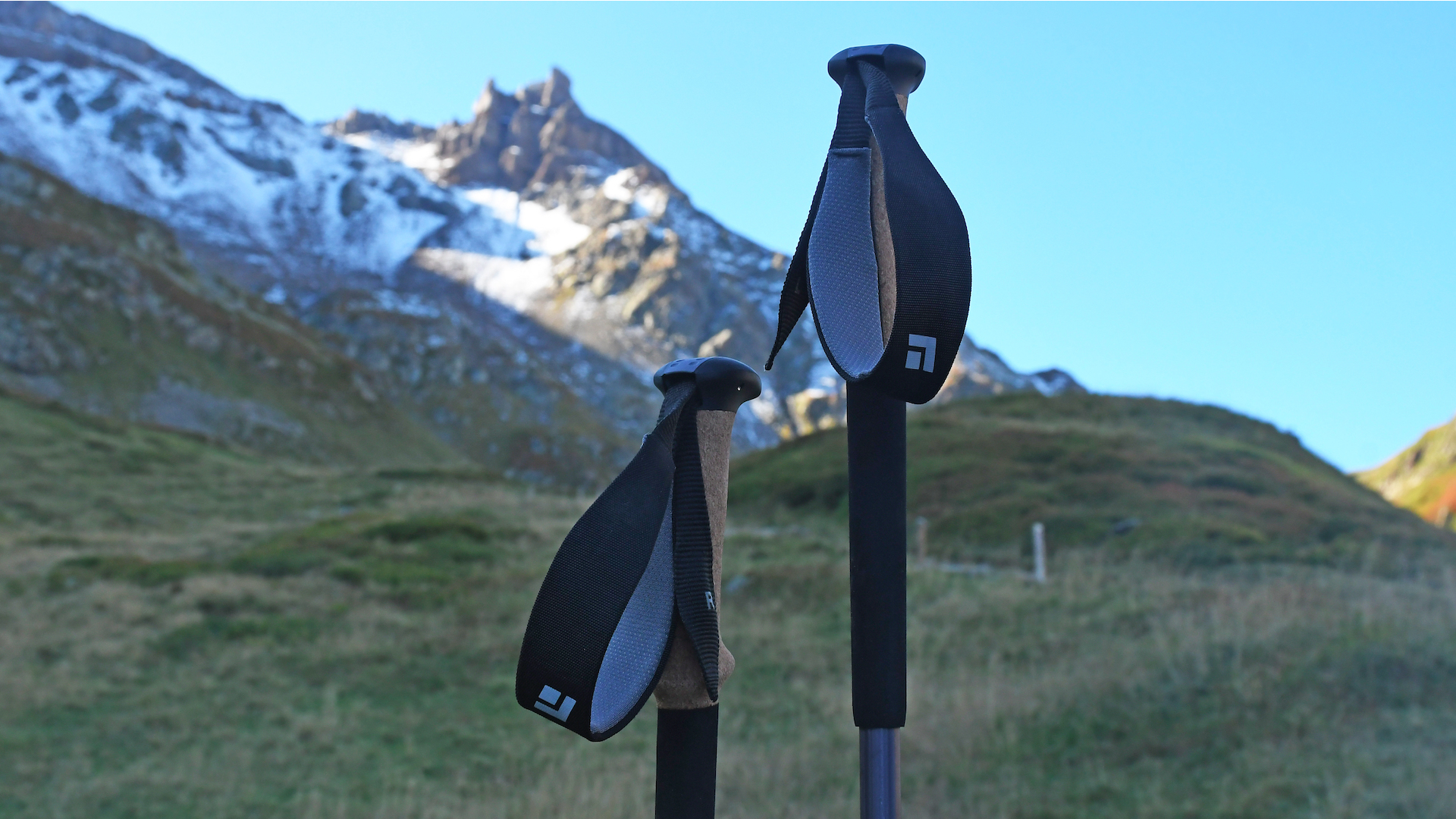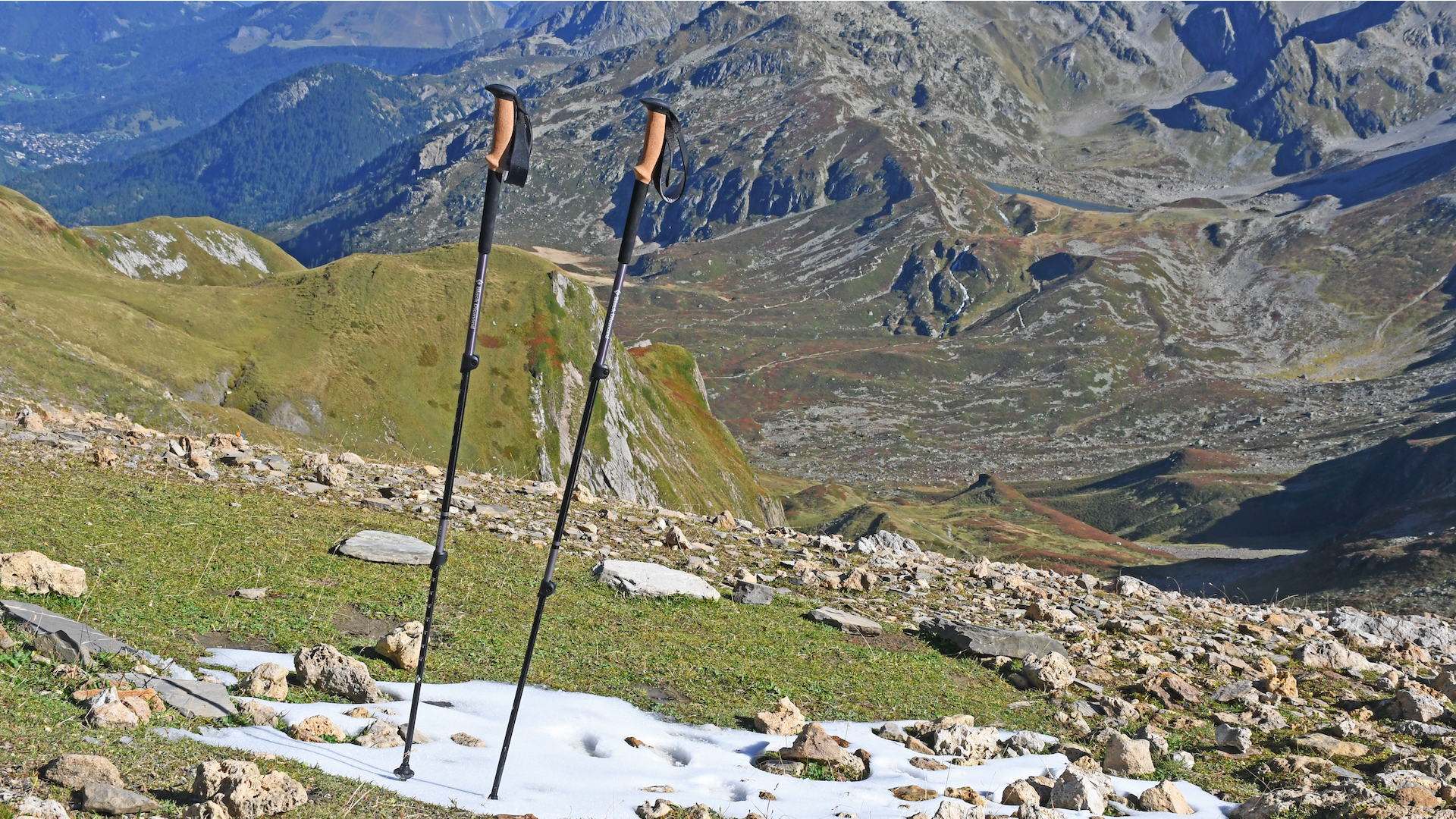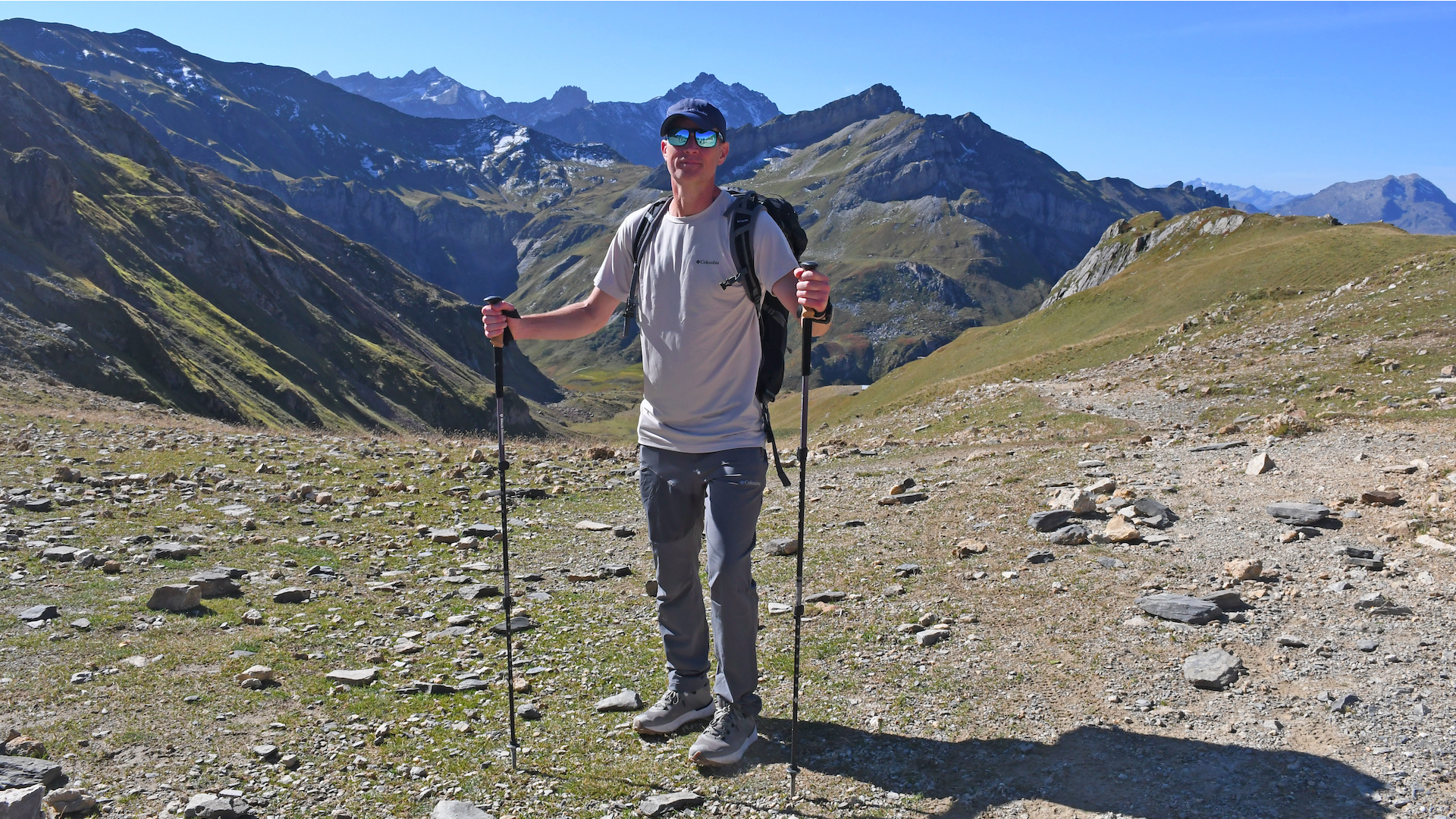Advnture Verdict
Easy to use, comfortable in the hand, extremely tough and very versatile, Black Diamond Trail Cork Trekking Poles are good striding sticks to use across all 12 months of the year. Made from quality materials and boasting a robust build quality, the cork grips offer impact absorption and temperature control, especially while bare-hand hiking.
Pros
- +
Tough and durable
- +
Comfortable, non-sweaty, impact-absorbing grips
- +
Relatively light
Cons
- -
Cork can deteriorate over time
- -
Heavier than carbon poles
- -
Pricey compared to some other poles
You can trust Advnture
Black Diamond Trail Cork Trekking Poles: first impressions
The stand-out feature on these Black Diamond Trail Cork Trekking Poles is the cork used in the grips. And this is real cork, plenty of it, with none of the plastic fillers you sometimes see used within so-called cork grips.
• List price: $129.95 (US) / £110 (UK) / €120 (EU)
• Weight: 1lb 1oz / 486g
• Gender specificity: Men’s / Women’s
• Usable length: 39in-55in / 100cm-140cm
• Collapsed length: 25in / 62cm
• Materials: 7075 aluminum shafts, soft-touch ergonomic grip top, cork grip, EVA foam grip extension
• Colors: Charcoal / Navy
• Best for: Hiking, trekking, day walking, backpacking
The benefit of cork over foam or plastic grips on trekking poles is that they don’t make your hands sweaty in warm conditions and they absorb lots of impact vibration, the effectiveness of which I’ll cover below, after going over the model’s other features.
As with all the best trekking poles, Black Diamond Trail Cork Trekking Poles are left/right specific. The Fusion comfort straps on the handles are made with a moisture-wicking material and have a flat lining for comfort. They offer excellent support and can easily be adjusted when you’re wearing thick hiking gloves.
Which is handy, because these telescopic sticks work well in winter too; this is a true four-season pole, and it comes with 100mm powder baskets included, for use in snow, as well as lower-profile trekking baskets for use when walking on unsealed and potentially soft surfaces, paths and trails.

The technical tip is also interchangeable: the poles come with carbide tips, which you can replace when they wear down, or swap out for rubber tips as and when required on certain surfaces.
Collapsible to a length of 25in / 62cm, these poles are extendable to between 39in-55in / 100cm-140cm, so they suit people of pretty much any height. Once you’ve achieved the desired length, they are secured in place with Black Diamond’s excellent FlickLock system, a lever-based clamp mechanism that makes micro adjustments easy to make, even while you’re trekking.
Below the main cork handles there’s an EVA foam-coated extended grip area that allows you to use the poles while traversing off-camber terrain without having to shorten one of the sticks. While not quite as light as carbon poles, the aluminum shafts are robust and hardwearing, and these poles should last for many years of adventuring – it’s true that cork does eventually deteriorate, but that takes a long time.
All the latest inspiration, tips and guides to help you plan your next Advnture!
Black Diamond Trail Cork Trekking Poles: on the trails

I’ve been using these Black Diamond Trail Cork Trekking Poles during day hikes along the South West Coast Path and across Dartmoor and Exmoor in southern England for more than six months, and more recently I took them on a multi-day hut-to-hut trek in the Haute-Savoie in the French Alps, tackling trails that spiral around the base of the Mont Blanc massif.
True to Black Diamond’s claims, these versatile, three-piece, telescopic trekking poles are excellent for hiking across a range of environments and landscapes, in all kinds of conditions. I was aware that the cork handles would perform particularly well in warmer weather, and found that they genuinely were far less sweaty than foam grips.

The enhanced ergonomic comfort offered by the cork grips also absorbed vibration brilliantly. This is really noticeable in any conditions where you don’t require gloves, but especially when you’re working hard amid steeper hills and the temperatures are quite ambient.
Conditions in France during my fall adventure were surprisingly warm, and using the poles barehanded I really appreciated the cool, comfortable feel of the cork handgrips, which meant my palms didn’t get sweaty even when I was hiking hard in the midday heat to high passes and peaks.

The terrain was rocky and rough, but the natural cushioning that cork offers absorbed almost all the vibration that was sent up the shaft of the pole every time the carbide tip made contact with the stony ground.
I’ve used plenty of lighter carbon poles, but across the often-challenging terrain I encountered on Dartmoor and in the Alps, I was happier using the robust aluminum shaft used in this model, as I was confident they would take a bit more rough and tumble treatment without snapping or splintering (something that happened to me while fastpacking the West Highland Way last year, using carbon poles).
Lastly, when they were not in use, I found these three-piece telescopic poles very simple to concertina together and stash on the outside of my backpack. These are certainly not cheap poles, but they did instil confidence and I can see me using them for many years to come.


Author of Caving, Canyoning, Coasteering…, a recently released book about all kinds of outdoor adventures around Britain, Pat has spent 20 years pursuing stories involving boots, bikes, boats, beers and bruises. En route he’s canoed Canada’s Yukon River, climbed Mont Blanc and Kilimanjaro, skied and mountain biked through the Norwegian Alps, run an ultra across the roof of Mauritius, and set short-lived records for trail-running Australia’s highest peaks and New Zealand’s Great Walks. He’s authored walking guides to Devon and Dorset, and once wrote a whole book about Toilets for Lonely Planet. Follow Pat’s escapades on Strava here and Instagram here.

